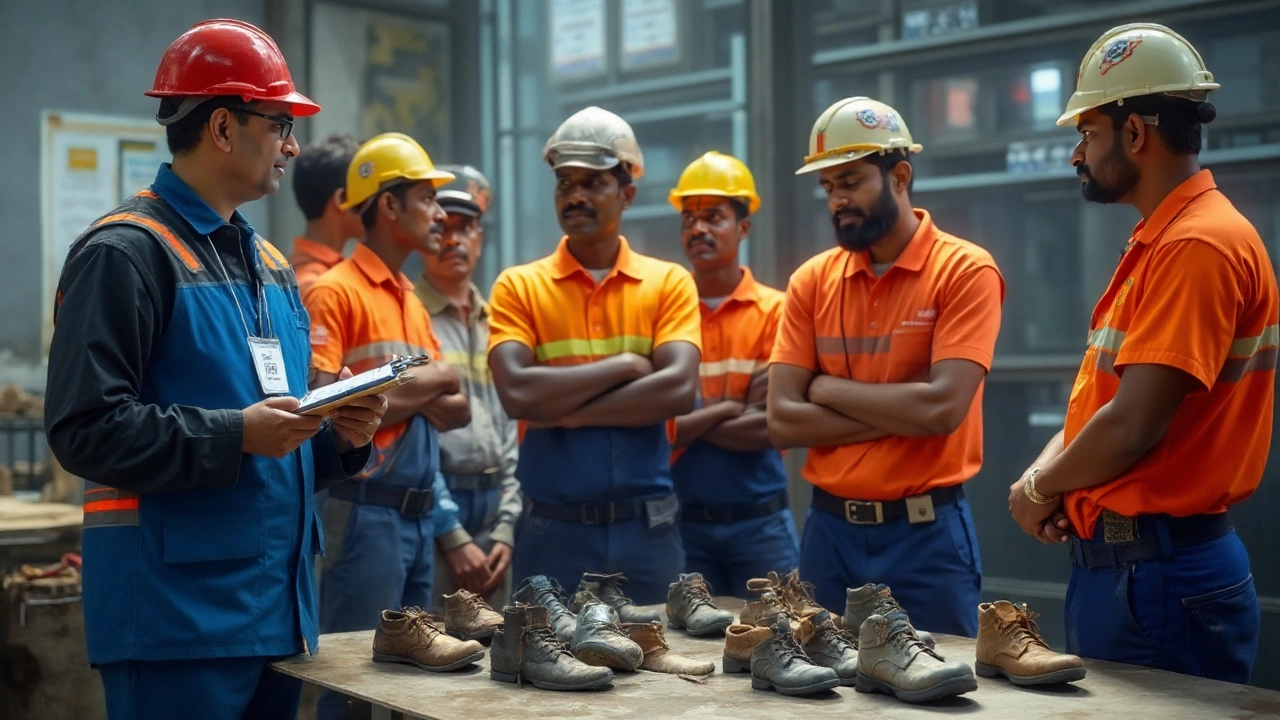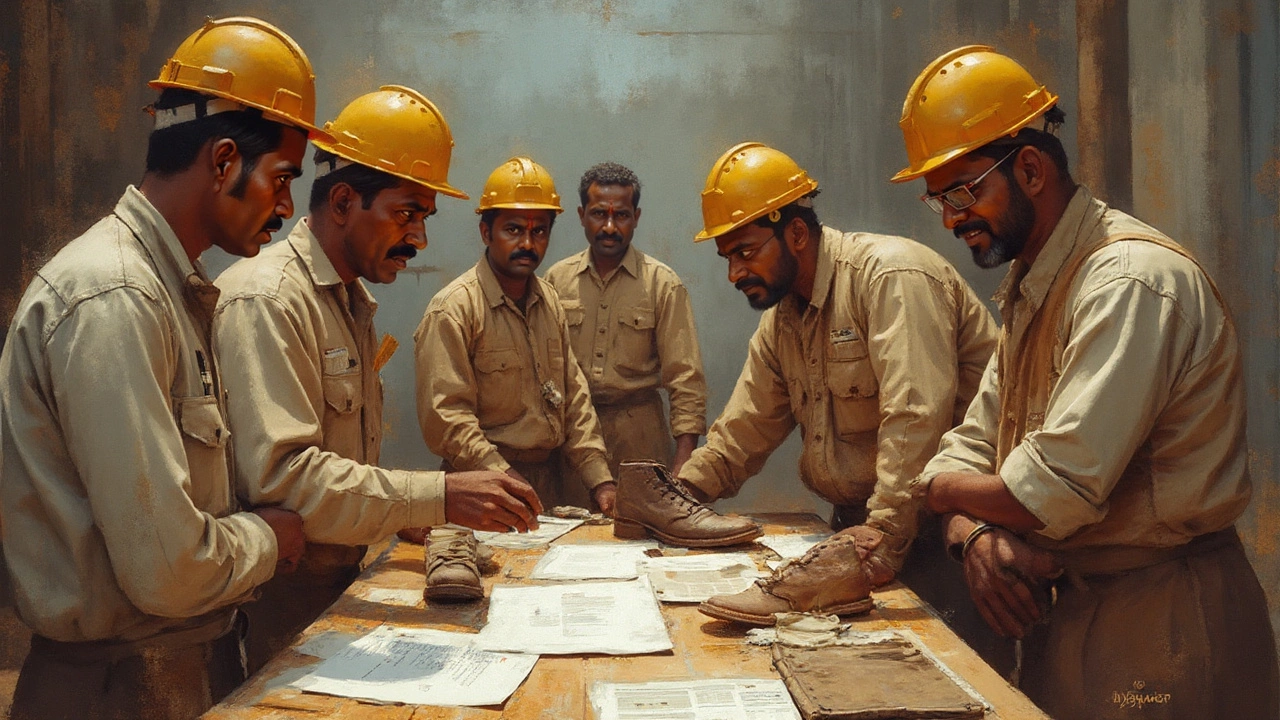Do Employers Have To Pay For Safety Shoes? Understanding Workplace Footwear Rules

Walk into any busy warehouse, construction site, or bustling hospital and take a look down. You’ll find people in all sorts of specialized shoes—big, chunky steel-toe boots, slip-resistant sneakers, clogs built for standing. It’s obvious many workplaces have strict rules about shoes. But who’s supposed to pick up the tab for those pricey safety shoes? With safety standards tightening and work gear costs only inching upwards, it’s a loaded question. Plenty of folks are surprised to find out there’s no universal law forcing every boss to whip out their wallet. It depends on a whole mix of factors—your job, your employer, your country, and even tiny details in your company handbook.
What Laws Actually Say About Paying for Safety Shoes
This conversation always seems to circle back to law. Most people have heard rumors about some mysterious workplace rulebook that spells out who pays. The truth is a little messier. In the U.S., the Occupational Safety and Health Administration (OSHA) holds the reins when it comes to workplace safety standards. Back in 2008, OSHA made things pretty clear for American workers: if employers require specific protective equipment for safety—including shoes that meet certain standards—they usually have to pay for them. Think hard hats, gloves, goggles... and, yep, those steel-toe boots if they’re a must for the job.
But don’t rush out shopping for boots on the boss’s tab just yet. OSHA does carve out exceptions. If the footwear can easily be worn off the job—like hiking boots or regular sneakers with extra grip—employers might not have to pay. They draw a line between specialized gear and what’s called “non-specialty” safety-toe footwear. Here’s what’s wild: employers have to pay if the shoe is designed mainly for their workplace safety requirement, but if you pick something fashionable you’d gladly wear on your day off, then pulling out your own credit card might be fair game.
Countries like the UK, Canada, and Australia have similar setups. The UK’s Health and Safety at Work Act (1974) includes a duty for employers to provide necessary protective gear at no cost. Australia’s rules dip case-specific; employers usually pay if the risks are unavoidable unless the worker simply won’t comply. Canada wraps it up in their occupational health codes, with most provinces siding with free gear for risky work. So, don’t be surprised—there’s no one-size-fits-all law, even in places with strong safety reputations. The small print counts.
Of course, written law is only a slice of the pie. Companies often put policies in place that go well beyond legal minimums, partly to attract good workers and avoid even the whiff of a legal spat. That’s why you’ll see some warehouses hand out boots during your first shift, while others just point you toward the nearest workwear shop.
Just to give you a look at how different workplaces might approach safety footwear, take a look at this real-world breakdown:
| Country | Governing Body | Who Pays for Required Safety Shoes? |
|---|---|---|
| United States | OSHA | Employer (if shoes are only for workplace protection) |
| Canada (Ontario) | OHSA | Employer usually pays, some exceptions |
| United Kingdom | HSE | Employer must pay |
| Australia | Safe Work Australia | Mostly employer, but with exceptions |
| Germany | DGUV | Employer pays for all required PPE |
Read the small print of your workplace policy. If you’re unsure, you can always ask your HR department or safety manager for a clear answer.

How Companies Handle Safety Footwear: Real Policies & Workplace Practices
Peeling back the curtain, no two companies seem to deal with safety shoe rules in exactly the same way. Walk into an Amazon fulfillment center and you might be sized for company-provided boots the same day. But apply to a small auto repair shop, and you’ll likely be expected to show up in your own protective shoes. The big pattern is this—large companies working with lots of risky equipment lean hard on clear safety programs, often including employer pay for safety shoes.
Let’s take a look at how things can go down:
- Some employers directly buy safety shoes from vetted suppliers and hand them out on day one. This keeps things easy—they know you’re wearing exactly what meets safety codes.
- Other companies reimburse you up to a limit (like $75 or $100) after you provide a receipt. There’s usually a list of approved brands or local shops.
- Smaller work sites sometimes hand you a voucher for their preferred safety boot store. Buy any shoe that meets basic standards, turn in your voucher, and you’re set.
- If a workplace rule says only steel-toe or slip-resistant shoes are okay but doesn’t specify a brand, some places just expect you to pay yourself. You might get a tax break or a small annual allowance if you’re lucky.
One thing that surprises a lot of new hires: shoe replacement policies. Got a pair that wears out on the job? Most employers who paid in the first place will replace them after about a year or when they become unsafe. But get oil or acid on them from doing something outside your assignment? Sometimes, you’re on your own for damages if the loss was avoidable.
Here’s something else most folks don’t realize—having your company cover safety shoes can actually save you money far beyond the initial purchase. On average, a good pair of branded safety shoes for warehouse or industrial work hovers around $90 to $140. And they often last a year or less if you’re constantly on your feet. When you do the math for replacements, you’re looking at a recurring charge—a big deal if you’re on a tight budget or have a family to support.
Whether or not an employer covers these costs can impact your take-home pay. Some unions negotiate yearly shoe allowances as part of their contracts. In unionized truck driving jobs, for example, many members get up to $125 a year for footwear, no questions asked. It’s worth finding out if your workplace offers something similar. Just check the fine print: most companies require you to choose shoes that meet their list of standards (ASTM, CSA, EN ISO) and bring in a receipt to avoid a denied claim.
Big retailers, hospitals, and food processing plants offer another interesting twist. They often push strict hygiene or slip-resistance standards. Some require specific brands like Skechers Work or Red Wing. Others want shoes that are easily sanitized or have closed heels. If you already own a pair that fits their rules, awesome—you save cash. If not, you might be set back a chunk before your first paycheck. It’s always smart to ask about their specific list before buying anything flashy or “stylish” hoping it’ll count.
Still unsure what your company expects? Contact your HR person, union rep, or direct supervisor. Ask about the specifics: Do they pay upfront? Do you get reimbursed? What about damaged shoes? Don’t assume anything, because one company’s cover-everything program is another’s you’re-on-your-own approach. And remember, rules can change with new budgets, insurance rules, or even workplace injuries that trigger a safer, stricter policy with new perks.

Tips For Getting the Most From Your Work Shoe Policy
Tons of people miss out on workplace shoe help just because they’re shy about asking. Here’s the trick—companies want workers to be safe. Fewer injuries means lower insurance, which means they’re motivated to help you get the right shoes. Some tips to make life easier?
- Check the company handbook or intranet site before you buy anything. Most places post their policies online.
- If you need proof to get reimbursed, snap a pic or keep your receipt somewhere safe. No receipt, no reimbursement in many spots.
- Stick to the exact type or brand your employer recommends. If the guidelines require ASTM or CSA-certified shoes, don’t get fancy with off-label brands.
- If your company offers annual shoe replacements or repairs, use it. Don’t slog around in worn-out footwear just to save administrative hassle.
- If you have wide or hard-to-fit feet, ask for special accommodations. Many companies will work with you and might order direct from specialty suppliers if you make a case.
- If you work a side gig or switch roles, keep your shoe receipts—work boots can sometimes be a tax deduction if you’re required to buy them and your boss doesn’t reimburse you. U.S. tax code lets you deduct unreimbursed employee expenses in some cases.
- Don’t forget about comfort. Just because shoes are required doesn’t mean you have to suffer. Ask coworkers about their experiences, read reviews, and remember you don’t need to settle for the cheapest pair if you get a stipend. A few extra bucks can mean less pain after a twelve-hour shift.
A final heads up: Don’t ignore foot hazards just because you’re saving money. Slipping on a wet floor or dropping something heavy on your toes can set you back thousands in medical bills and lost wages. According to the Bureau of Labor Statistics, foot injuries cause about 60,000 lost workdays every year in the U.S. Shoe policies exist for a reason, and it’s not just to make you buy new things or follow rules for the sake of it.
The short answer? Sometimes your company pays for your safety shoes, sometimes they don’t. It’s all about the risk, the rules, and—yes—the fine print. Always check your policy before you make a big purchase, and don’t be shy about getting the most out of your benefits. Your feet (and your wallet) will thank you.